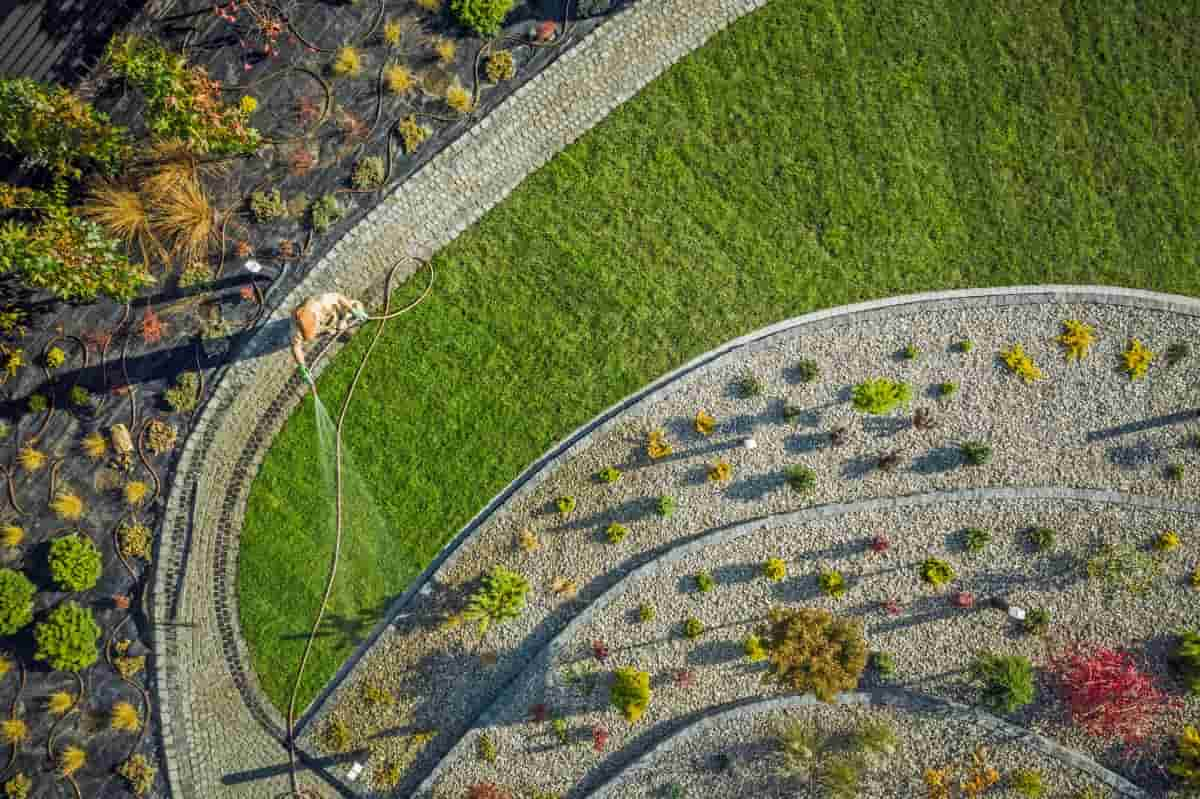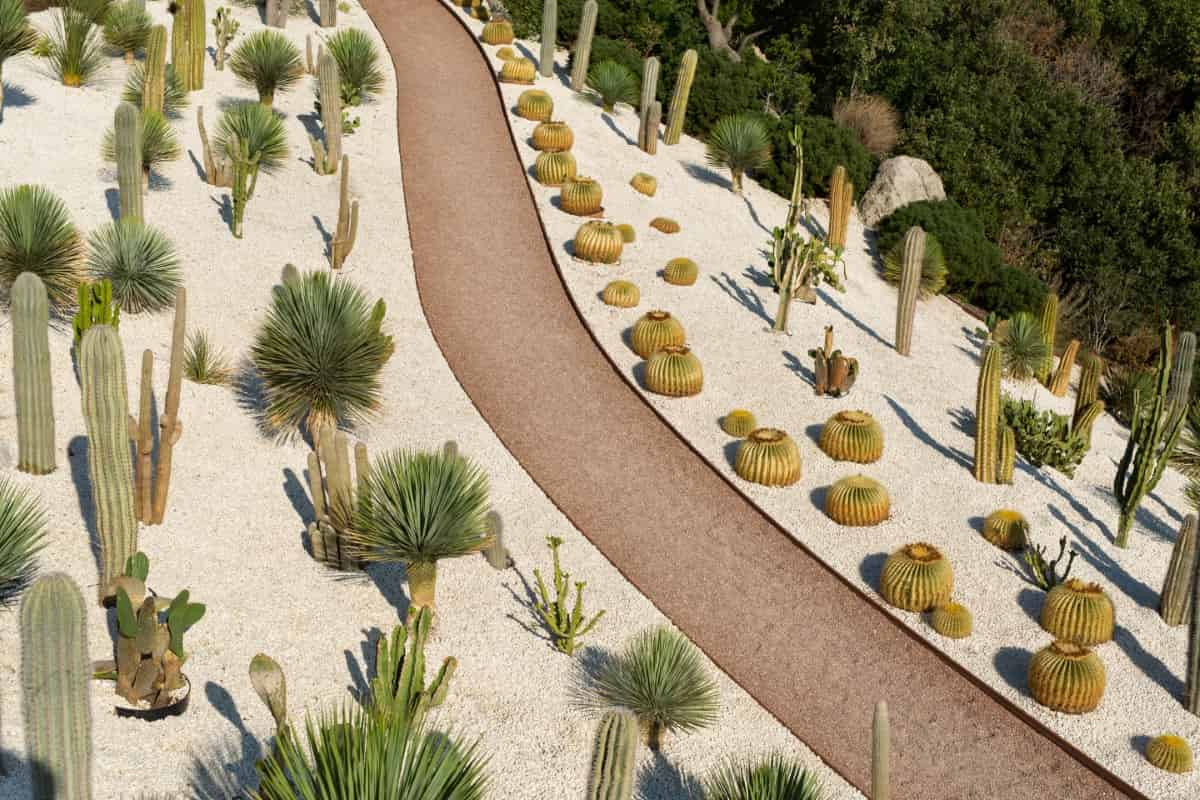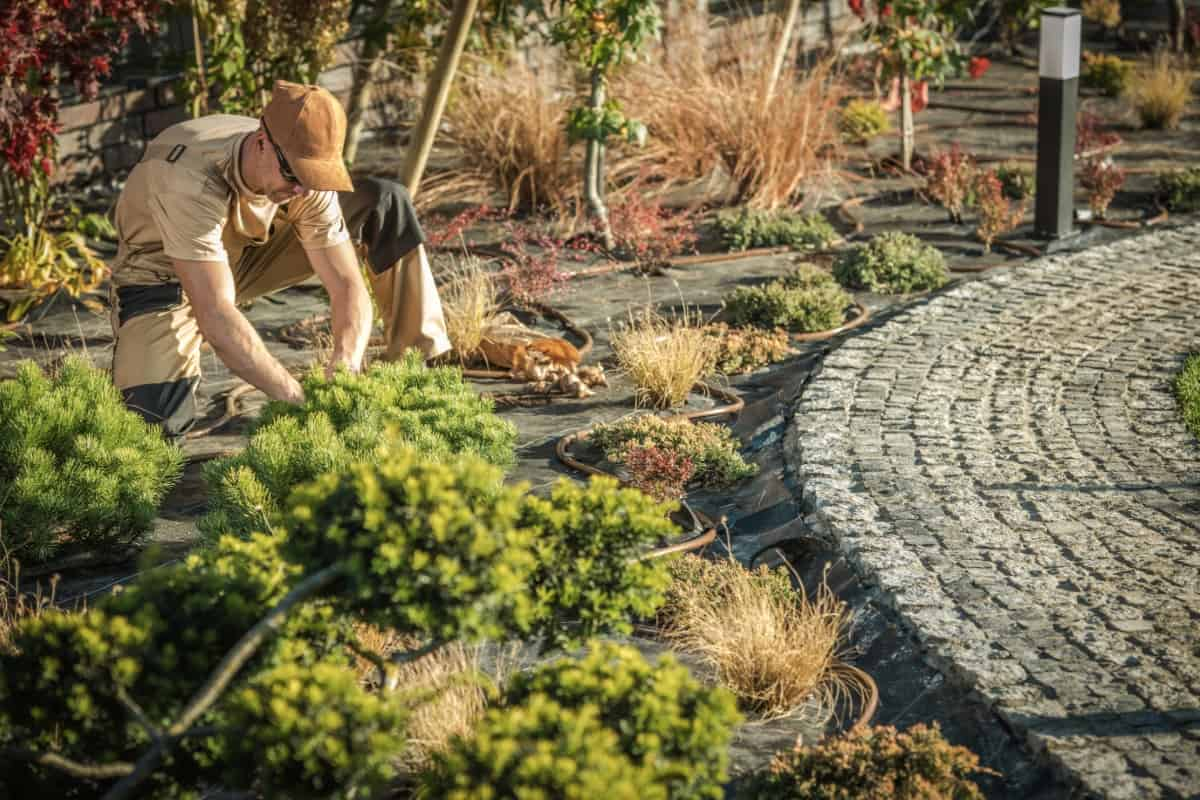A drought-tolerant landscape is all about creating a garden that thrives with minimal water usage. Instead of relying on constant watering, these landscapes are designed to withstand periods of drought by using plants and techniques that require less water. These landscapes are resilient against dry spells and require minimal intervention to stay healthy and vibrant throughout the year.

Understanding Drought-Tolerant Landscaping: Principles and Benefits
This approach focuses on designing a sustainable garden that can thrive with minimal water usage. By choosing plants that are well-adapted to arid conditions, you’re not only conserving water but also creating a beautiful and resilient landscape. The principles of drought-tolerant landscaping involve selecting plant varieties that require less water, improving soil quality for better moisture retention, and incorporating efficient irrigation systems.
In addition to being environmentally friendly, drought-tolerant landscaping offers numerous benefits. It can save you money on water bills, decrease maintenance requirements, and increase the overall value of your property.
Selecting Drought-Resistant Plant Varieties
It’s important to select plant varieties that can thrive with minimal water. Look for plants that have adapted to arid conditions, such as succulents like agave and cacti. These succulents store water in their leaves or stems, making them excellent choices for conserving moisture. Consider aadding native plants into your garden design. Grasses like blue grama and buffalo grass are great options for lawns in dry regions.
Herbs like lavender and rosemary not only add fragrance to your garden but also require little watering once they’re established. Ornamental grasses like feather reed grass and fountain grass can provide texture and visual interest while being drought-resistant.
Soil Preparation and Improvement for Water Retention
Soil preparation is a major factor in ensuring water retention for your plants. By focusing on improving the quality of your soil, you can create an environment that helps plants thrive even during dry periods. One key aspect of soil preparation is incorporating organic matter. Another strategy is to till the soil to break up compacted layers and improve drainage. This allows water to penetrate deeper into the ground, more effectively reaching plant roots. Adding mulch on top of the soil not only helps with weed suppression but also conserves moisture by reducing evaporation.
In case you missed it: Best Drought-Tolerant Garden Plants Which Can Survive with Minimal Water

Efficient Irrigation Systems for Drought-Tolerant Gardens
Efficient irrigation conserves water and ensures that your plants receive just the right levels of moisture to thrive. Drip irrigation is a popular choice for drought-tolerant gardens. They deliver water to the plant’s roots, minimizing evaporation and runoff. This method reduces water wastage while promoting deep root growth for stronger and healthier plants.
Another effective option is using soaker hoses or micro-sprinklers, which provide gentle and targeted watering and prevent excess moisture loss through wind drift or overspray. By customizing your irrigation system based on your garden’s layout and plant needs, you can achieve optimal water efficiency without compromising the health of your landscape.
Mulching Techniques to Conserve Moisture
Mulching is a key technique in drought-tolerant landscaping. It helps conserve moisture and reduce water evaporation from the soil. By applying organic mulch layers, such as wood chips, straw, or leaves, around your plants, you can make a protective barrier that helps retain soil moisture and regulate temperature. In addition to conserving water, mulch also suppresses weed growth, and it can compete with your plants for precious water resources.
When applying mulch in your garden, leave some space around the base of plants to prevent rotting or pest infestations. Mulch should be spread evenly but not too thick to allow air circulation and prevent mold or mildew buildup. Consider using different types of mulch based on your garden’s needs—coarse materials like bark are great for retaining moisture in larger areas, while finer materials work well around delicate plants.
Incorporating Hardscaping Elements to Reduce Water Use
Adding hardscaping elements into your landscape design can significantly reduce water usage. By adding features like gravel paths, stone patios, or wooden decks, you create areas that don’t require regular watering. Additionally, using materials like permeable pavers allows rainwater to seep into the ground instead of flowing off-site. This helps replenish groundwater levels and minimizes wastage. Consider installing a rain barrel connected to your downspouts to collect rainwater for use in watering plants or cleaning outdoor spaces.
In case you missed it: Landscape Gardening Ideas, Design, Techniques

Creating a Rain Garden to Capture and Utilize Runoff
Rain gardens are a fantastic way to not only add beauty to your landscape but also to help the environment. By capturing and utilizing runoff from rainwater, these gardens can reduce erosion and pollution in local waterways. To make a rain garden, start by selecting an area in your yard that naturally collects water during rainfall. This could be near a downspout or at a low point in your yard.
Next, choose native plants that thrive in moist conditions for your rain garden. These plants will help absorb excess water and stop it from running off into storm drains. Consider incorporating layers of gravel and mulch into your rain garden design to improve drainage and reduce soil erosion.
Designing with Native Plants for Sustainability
Designing with native plants for sustainability is a smart choice when creating a drought-tolerant landscape. Native plants are well growing in the local climate conditions and, once established, require less water and maintenance. By incorporating native species into your garden design, you can promote biodiversity.
Native plants prevent soil erosion because they have deep roots, making them ideal for sustainable landscaping practices. Their resilience makes them valuable assets in maintaining a vibrant garden even during periods of drought.
Landscape Layout Strategies to Minimize Water Evaporation
One effective approach is to group plants with similar watering needs. By clustering them based on their water requirements, you can ensure more efficient irrigation and reduce water loss due to varying hydration levels. Another strategy is to create shade in your garden by strategically placing taller plants or structures like pergolas. This helps prevent direct sunlight from evaporating moisture from the soil too quickly.
In case you missed it: Creating a Tropical Oasis: 14 Palm Tree Varieties for Your Landscape

Additionally, using ground cover plants or mulch around your landscaping can act as a protective barrier, reducing evaporation by keeping the soil cool and moist. Consider implementing drip irrigation systems that deliver water to the base of plants, minimizing waste through evaporation and runoff. Properly spacing out your plantings and avoiding overcrowding also promotes air circulation and reduces the surface area exposed to the sun, further lowering evaporation rates in your garden design.
Maintenance Practices for a Healthy Drought-Tolerant Garden
Maintaining a healthy drought-tolerant garden is crucial to ensure its longevity and vibrancy. Regular monitoring of plant health and soil moisture levels is key. Pruning dead or damaged branches helps promote new growth and conserves water for healthier plants. Weeding regularly prevents unwanted competition for water and nutrients, allowing your drought-resistant plants to thrive.
Adjusting irrigation schedules based on weather conditions ensures that your garden plants receive the right amount of water they need. By selecting drought-resistant plant varieties and implementing efficient irrigation systems, you can create a beautiful garden that thrives even in times of water scarcity.
- How to Grow Hibiscus from Flower
- Plantation Ideas for Home Decoration: A Beginners Guide
- Flower Garden Designs and Layouts for Beginners
- Planting and Spacing Techniques in Papaya: A Beginner’s Guide
- Growing Gold: Essential Techniques for Planting Pineapples
- How to Make Kalanchoe Plant Bushy: Home Remedies and Solutions
- 11 Reasons Why Your Gardenia is Not Blooming: Home Remedies and Solutions
- Eco Elegance: The Guide to Designing a Drought-Tolerant Landscape
- Gardening on a Slope: Strategies for Hillside Landscaping